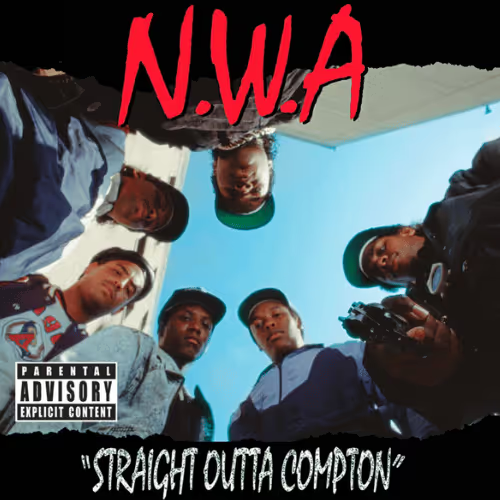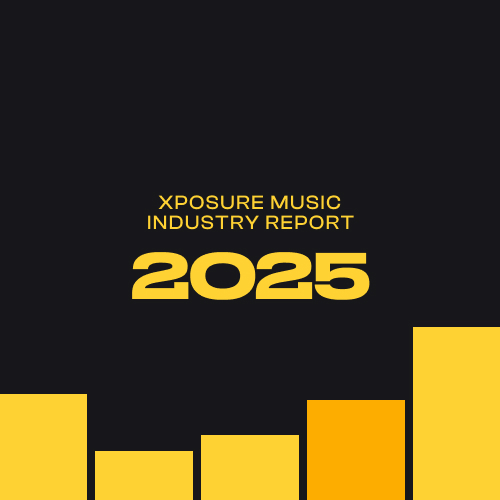Most people born into the boomer or millennial generation remember what it was like to pick up a brand new copy of a new hip-hop or heavy metal album and face the controversial parental advisory sticker staring at them from the album cover. In many cases, and despite its original purpose to alert buyers about controversial and explicit content, the sticker, or content logo, only made the album more desirable, like a forbidden fruit.
While musicians initially fought over the introduction of the parental advisory label, they ultimately had quite a lot to gain from it, because the infamous black-and-white parental advisory sticker was like a magnet for rebel teens, urging them to buy the record and give it a listen to see what the fuss was all about. Nowadays, the label’s power has significantly dwindled, especially given the rise of digital music streaming, where artwork often becomes an afterthought. However, it still exists, hidden away in the metadata, so it’s worth considering whether your new album or single release might benefit from the use of the parental advisory label.
What is a Parental Advisory label?
A Parental Advisory label is a warning label, or conent logo, placed on audio recordings to indicate that they contain explicit content, such as strong language or mature themes, which may not be suitable for children. It was introduced by the Recording Industry Association of America (RIAA) in the 1980s.
Let's rewind and look back at how it came to be.
History of Parental Advisory label
The story of the Parental Advisory ‘Explicit Content’ label begins in the 1980s. Tipper Gore, wife of then-senator Al Gore, bought Prince’s ‘Purple Rain’ record as a gift for her daughter, and was reportedly shocked by some controversial lyrics in the song ‘Darling Nikki.’ Distressed about the discovery, she joined forces with three other Washington, D.C., women to establish the Parents Music Resource Center, or PMRC.

Each of the women who founded the group were married to high-profile politicians at the time, and these connections helped them bring the issue of explicit content before Congress in 1985. The members went as far as to compile a list of songs featuring controversial lyrics that could be harmful for teen listeners, now known as the ‘Filthy Fifteen.’ The list included tracks by Madonna, Def Leppard, AC/DC, Prince, and Twisted Sister, among others.
RIAA Parental Advisory
Just five months after it was established, the PMRC brought the issue in front of a congressional hearing, where musicians like Frank Zappa, Twisted Sister’s Dee Snider and John Denver testified against what they felt was ‘artistic censorship.’ The PMRC’s goal was to persuade the Recording Industry Association of America (RIAA) to enforce a Parental Advisory label (PAL) and add a content logo to records featuring controversial and explicit lyrics.
Most likely due to public pressure and a desire to avoid any further controversies and debates down the line, the RIAA granted the PMRC’s request and created a new labeling system that would see content logos applied to records featuring strong language. While some musicians were outraged and saw it as the beginning of the end for creative musical freedom, it would prove to ultimately work in their favor.
The controversies around strong language were mostly related to heavy metal bands, which were extremely popular in the 1980s, but also related to gangsta rap, which was a new emerging genre just starting to get traction in the U.S. In fact, NWA’s ‘Straight Outta Compton’ was one of the very first records to get the Parental Advisory label in 1988. Ironically, the presence of the label created increased interest in the record, especially among teens who were curious to discover what their parents didn’t want them to hear.

Are parental advisory labels still relevant today?
Over the decades, Parental Advisory labels have gained somewhat of a cult status, and records carrying such labels became highly sought-after, basically canceling the initial purpose of the content logo. However, they were important to record labels, distributors, and promoters because it warned them about potential controversial content within the record, thus helping them filter what went on air and what didn’t. Most artists also released non-explicit versions of ‘controversial’ singles to get radio play, while the explicit version made waves in the underground scene.
This is relatively still valid nowadays, even though it can be harder for the average listener to know whether what they’re listening to on Spotify or Apple carries a Parental Advisory label. Explicit versions of songs can also be easily found with a search on YouTube or Google, making it almost impossible for parents to filter what their kids are listening to. However, the labels still exist, even digitally, hiding in the track metadata, and they’re there to caution parents and labels on the presence of potentially controversial lyrics.
Impact of Parental Advisory labels on sales
Parental Advisory labels can affect sales in different ways. For some artists, the label may limit exposure, because retailers sometimes restrict where explicit albums are displayed or who can buy them, which can reduce sales, especially among younger listeners.
However, for many artists, especially in genres like hip-hop and rock, the label can boost appeal by signaling raw, authentic content. It can attract listeners who appreciate bold, unfiltered music, sometimes increasing curiosity and sales. Ultimately, the label’s impact depends on the artist’s audience and how it fits their brand, balancing some restrictions with added authenticity.
Does your album need a Parental Advisory label?
If you’re an emerging artist getting ready to launch a new release, whether it’s a single, a demo, a mixtape, an EP or an LP, you might wonder if getting a PAL attached to the release would be a good idea. If you think that some listeners might misinterpret your lyrics or be offended in some way by them, or that your words might have an unwanted influence or effect on teen listeners, you might decide that an explicit content logo might protect you from unwanted controversy and legal troubles down the line. But do you really need a PAL attached to your album, and how do you go about getting one in the first place?
Artists can’t just put a Parental Advisory label on their album cover before releasing it; they need to get permission from the RIAA first. The PAL is voluntary, not required by law, so artists or label need to contact the RIAA to obtain the label if the content of the record includes:
- Strong, controversial language
- References to violence or mental and/or physical abuse
- References or images of sexual behavior
- Racist, homophobic, and other biased language
- References to criminal behavior (illegal drug use, alcohol/tobacco use, other illicit substances)
- Lyrics that might be susceptible to interpretation with negative connotations.
There is obviously a fine line to tread and all lyrics and musical content are subject to interpretation, so it can be hard to decide whether your lyrics really do require a PAL. If you’re already working with a music producer, a publisher, or a record label, you can consult with them to get their thoughts on this issue, as their experience will help them better assess the potential for controversy. If you’re working independently, try to get feedback from other musicians or music industry professionals and see what they think before making a decision.
If you do decide to go the safe route and obtain a Parental Advisory label from the RIAA, you should know that the process is relatively simple. Most websites and music production tools available on the market offer an option or plugin that allows you to add the PAL to an album or photo in a digital format. Costs will vary, but you might already have this option available if you’re using music production software to create music.
For more information on Parental Advisory labels and standards, head over to the RIAA website.
Frequently Asked Questions
Do artists have to put up a Parental Advisory sticker?
In the United States, artists are not required by law to put a Parental Advisory label on their albums or songs. However, some artists voluntarily include such labels to warn listeners of explicit content and help parents make informed decisions regarding their children's access to the material. The decision to use a Parental Advisory label is typically a matter of artistic expression, industry standards, and consideration for the audience.
Why do artists need Parental Advisory labels?
Artists may choose to put a Parental Advisory sticker on their albums or songs to inform listeners about explicit content, including strong language, violence, or explicit themes. By doing so, they take responsibility for providing a warning to parents and consumers, ensuring that their music is not accessed by individuals who might find it inappropriate or offensive. Additionally, the presence of a Parental Advisory label can be seen as a reflection of the artist's commitment to artistic freedom and unfiltered expression, as it allows them to create content that may push boundaries without censorship.
Can I put Parental Advisory stickers on my album cover?
Yes, as an artist, you have the freedom to put a Parental Advisory label on your album cover if your music contains explicit content. Including the label is a responsible way to inform potential listeners and parents about the nature of your music, helping them make informed choices about whether it is suitable for their preferences or age groups. However, it's essential to ensure that the label is used appropriately and accurately reflects the content within the album to maintain transparency and build trust with your audience.
Where does the parental advisory sticker go?
The Parental Advisory sticker is typically placed on the front cover of physical music media, such as CDs, vinyl records, and cassette tapes, usually in the bottom right corner. This makes it clearly visible to consumers, especially parents, before purchase. In digital formats, platforms like iTunes or Spotify display the "Explicit" label next to individual tracks or albums to serve the same purpose.
How to add parental advisory sticker to a cover
To add a Parental Advisory sticker to a cover, you first need to obtain a high-quality, official Parental Advisory label graphic, which can be found through licensed sources or design resources. Then, using graphic design software like Photoshop or Canva, place the label prominently—usually in the bottom right corner of the cover—making sure it’s clearly visible but doesn’t obscure important artwork or text. Finally, save the file in the required format for printing or digital distribution.






.jpg)
.jpg)
.jpg)






